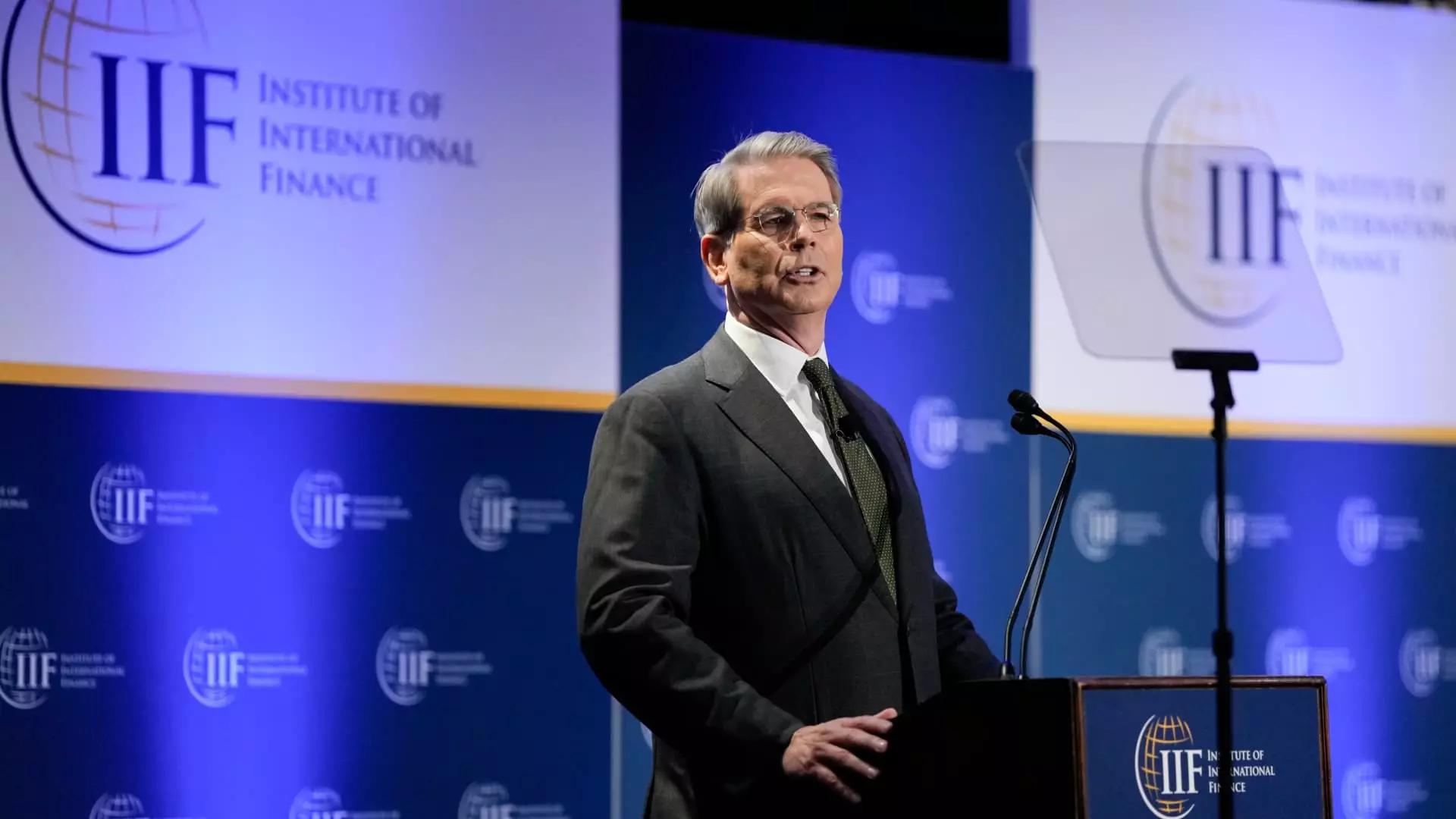In a world increasingly defined by interconnected economies and global supply chains, the rhetoric surrounding trade relations between the United States and China has become dangerously divisive. Treasury Secretary Scott Bessent recently assessed this reality, indicating “an opportunity for a big deal” on trade. However, while Bessent presents a prospect for collaboration, the underlying tensions in U.S.-China relations threaten to overshadow any potential for constructive progress. The trade war initiated by the Trump administration—marked by exorbitant tariffs of up to 145% on Chinese goods—has created an environment replete with uncertainty and fear.
The urgency expressed by Bessent is commendable, yet the sheer scale of these tariffs raises profound questions about their efficacy in achieving desired outcomes. High tariffs might seem like an immediate solution to address trade imbalances, but they often serve as a blunt instrument that disproportionately impacts consumers and small businesses in the U.S. The retraction of tariffs to a still-troublesome level of 50% to 65% has not been thoroughly examined for its feasibility or impact. Such high barriers will still lead to inflated prices, diminishing the very entity that the U.S. seeks to protect: its own economic stability.
Reimagining Global Financial Institutions
Bessent’s notion of a “blueprint to restore equilibrium” in global finance posits that the World Bank and the International Monetary Fund (IMF) must adapt to changing global realities. On one hand, this sentiment is urgent; these institutions were formed from a post-war consensus that has become stale in contemporary settings. Bessent argues rightfully that mission creep has distorted their focus, yet the stark proposition that the World Bank should cease lending to China—an entity long considered to be straddling the fence between developed and developing nations—raises eyebrows.
As Bessent asserts, lending to China is unjustifiable, but the temperate approach should pivot toward reevaluating lending practices universally rather than targeting a single country. The global landscape needs collaborative solutions, not punitive measures. Furthermore, suggesting that China should no longer benefit from these financial resources risks further alienating one of the largest economies and undermines the central objective of these institutions—global economic stability.
The Myth of “American Manufacturing Might”
One significant aspect of Bessent’s argument focuses on the hollowing out of the American manufacturing sector, a narrative that resonates strongly with many citizens affected by job losses. However, while he attributes this reality to intentional policy choices by foreign countries, there is a troubling reductionism at play. Yes, predatory practices in trade have undermined American jobs, but a more nuanced understanding of globalization reveals that factors such as automation and technological advancements have also played significant roles. Blaming foreign countries alone oversimplifies a complex economic reality where accountability lies on multiple fronts.
Moreover, Bessent encourages President Trump’s aggressive stance as a positive approach to countering these imbalances. But aggressive measures can easily devolve into policies that undermine rather than reinforce domestic manufacturing. While it’s essential to protect local jobs, negotiating a thoughtful trade agreement with China that emphasizes mutual benefits could yield better outcomes than further escalations.
A Path Forward: Emphasis on Collaboration
The rhetoric of rebalancing is indeed alluring, yet it must be grounded in the pillars of collaboration and mutual benefit rather than a combative stance. A focused effort to engage with China on economic disparities, supply chain security, and shared global challenges holds more promise than the current trajectory of tariffs and threats.
Bessent’s insights can serve as a catalyst for a more profound transformation—one that advocates not just for the reallocation of resources but for a reimagining of what international trade can offer. The approach must not be about antagonism, but rather about finding common ground on which both nations can thrive without compromising their integrity or security. The slope toward a harmonious trade relationship is steep, but the potential for a durable partnership makes the climb worthwhile.

